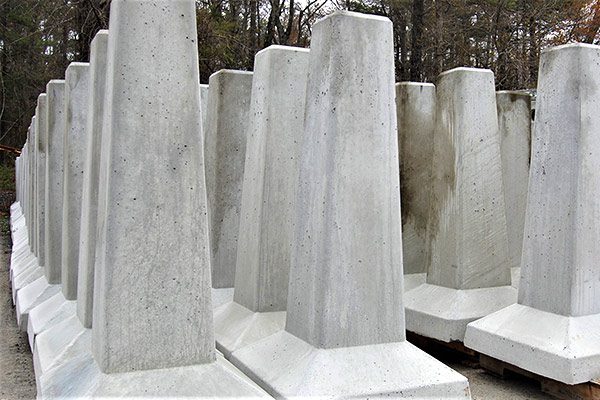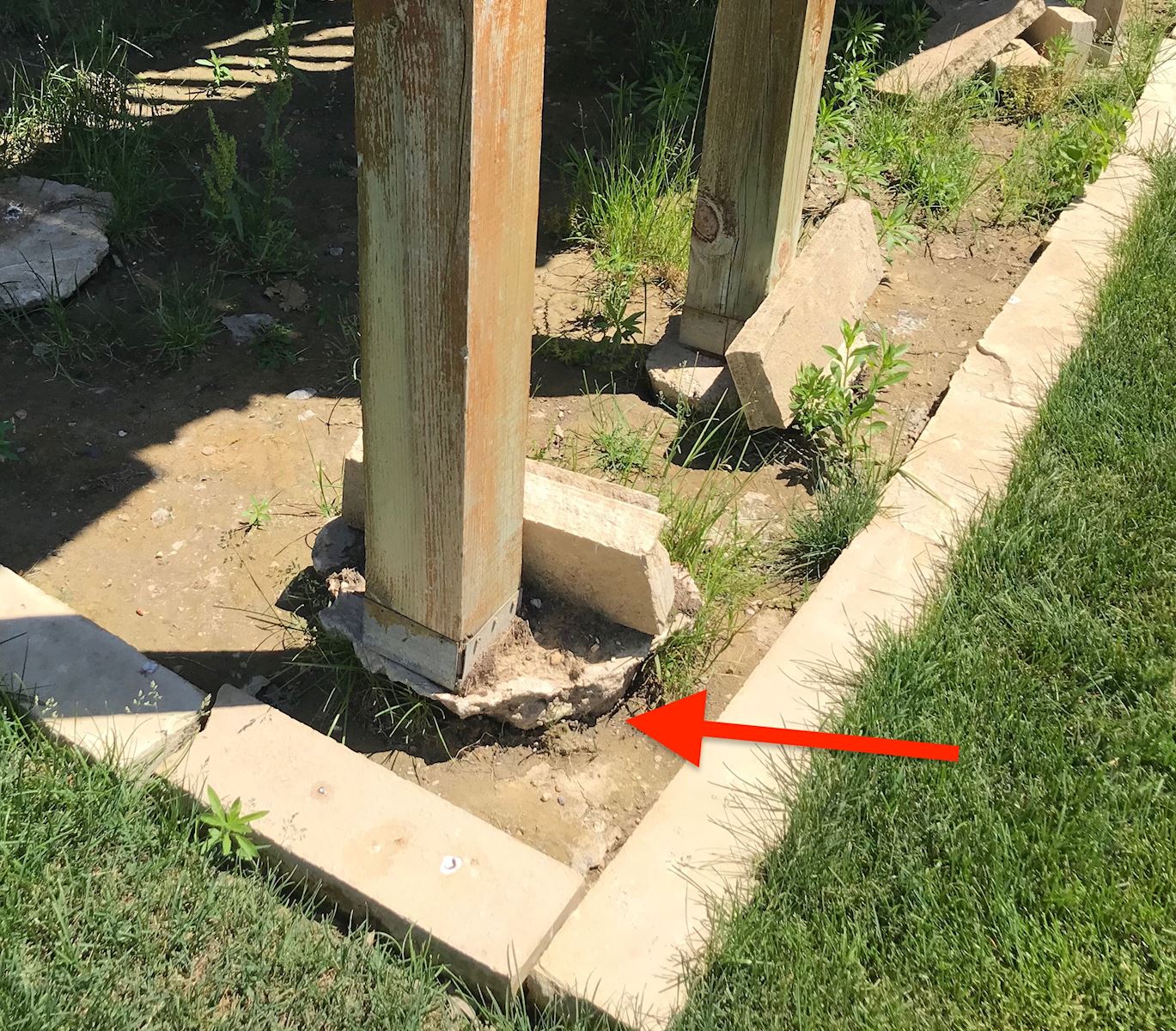Step-by-Step Deck Quality: Making Certain Security with Effectively Mounted Deck Footings
Take Full Advantage Of the Life Expectancy of Your Deck With Strong and trusted Footings
As house owners, we invest a considerable quantity of time and sources right into producing the best outside room. A deck is usually the focal point of that space, supplying a location to loosen up, captivate, and enjoy the elegance of nature. However, in order to totally take full advantage of the life-span of your deck, it is critical to ensure that it is developed on dependable and solid footings. These footings develop the foundation of your deck, giving security and support, and are typically the distinction in between a deck that lasts for years and one that calls for constant repair work. In this conversation, we will check out the significance of trusted footings, the various kinds of solid ground materials, correct installation methods, and just how to preserve and evaluate your deck's grounds to stop damages. Whether you are in the procedure of building a new deck or looking to enhance the longevity of your existing one, join us as we discover the tricks to a deck that stands the examination of time.
Relevance of Trusted Grounds
The value of trusted footings can not be overemphasized when it comes to optimizing the lifespan of your deck. The footings work as the structure whereupon the entire structure rests, supplying security and support. Without a solid footing, the deck is vulnerable to moving, sinking, and even collapse, which can substantially lower its life-span and pose safety risks.

Picking the right type of ground is additionally essential. One of the most usual kinds include concrete footings, helical piers, and sonotubes. Aspects such as dirt conditions, climate, and the size of the deck will certainly establish the most suitable choice. Working with an expert to examine the dirt, layout the grounds, and ensure proper setup is extremely recommended.
Buying trustworthy grounds might include extra expense and effort upfront, however it is a beneficial investment that will add to the long-lasting toughness and safety and security of your deck. By making certain a solid structure, you can appreciate your deck for several years ahead, understanding that it is developed to hold up against the examination of time.
Sorts Of Strong Footing Products
To guarantee the stability and long life of your deck, it is important to consider the numerous kinds of solid footing materials offered. The option of footing product is essential as it provides the required assistance and security to hold up against the weight and lots of the deck framework.
One reliable and typical material utilized for deck grounds is concrete. Concrete footings are long lasting and supply superb stability. They can be put straight into the ground or use precast concrete grounds for much easier installation. An additional option is helical piers, which are steel shafts with helical plates that are screwed into the ground. These piers offer superb load-bearing capacity and can be utilized in different soil problems.
For locations with poor dirt problems, such as extensive or loosened soils, a footing system that makes use of steel or composite piers may be favored. Deck Footings. These piers are driven deep into the ground to get to stable dirt layers, guaranteeing the security of the deck
In many cases, deck footings can additionally be constructed utilizing cured lumber. It is crucial to make certain that the lumber is correctly treated to stand up to rot and degeneration caused by exposure to dampness and insects.
When choosing a footing product for your deck, it is critical to consider aspects such as dirt problems, climate, and neighborhood structure codes. Consulting with a specialist contractor or structural engineer can help determine the most appropriate ground material for your particular deck job.
Appropriate Installment Strategies for Footings
Thinking about the significance of making sure security and longevity for your deck, it is essential to understand the proper installation techniques for footings. The success of your deck project relies greatly on the honesty of its structure, which is why adhering to the proper installment techniques is crucial.
First and foremost, it is necessary to determine the appropriate dimension and deepness of the footings based on the design and load needs of your deck. This details can be acquired from building codes or through consultation with an architectural designer. As a basic check out this site guideline, footings should go to the very least 12 inches in diameter and expand below the frost line to stop settling or changing.
When the measurements are established, the following action is excavation. Digging the openings for the grounds should be done with precision, making certain they are deep adequate and have a level base. Deck Footings. This will provide a read this post here secure base for the grounds
To further boost the stability of the grounds, it is suggested to make use of a concrete blend with a stamina of at least 3,000 psi. This will certainly guarantee the grounds can stand up to the weight and forces put in by the deck.
Throughout setup, it is very important to maintain the footings degree and aligned effectively. This can be achieved by making use of a level and string lines to assist the positioning of each ground.
Maintaining and Checking Your Deck's Footings
Routine upkeep and extensive inspections are necessary for ensuring the lasting stability and security of your deck's grounds. Over time, footings can catch wear and tear, weather, and dirt activity, which can compromise their architectural honesty. To optimize the life-span of your deck's grounds, it is crucial to execute a routine upkeep regimen and conduct extensive assessments.

Additionally, it is critical to check footings for any type of indicators of damage or damage. This includes monitoring for cracks, splits, or crumbling concrete, in addition to any kind of indications of activity or settlement. Any type of concerns ought to be resolved quickly to prevent additional damages and ensure the security of the deck.
In addition, it is recommended to check the bordering soil for any kind of signs of erosion or moving. Dirt movement can affect the security of the grounds, so it is important to attend to any soil-related problems without delay.
Signs of Footing Damage and Exactly How to Address Them
Footing damages can pose serious dangers to the security and safety and security of your deck, making it important to immediately recognize and resolve any kind of indicators of deterioration. One of one of the most usual indicators of footing damages is settling or sinking of the deck. This can occur because of soil erosion, inadequate footings, or bad building methods. If you discover that your deck is unequal or leaning, it is important to take instant action to avoid additional damages. An additional indicator of footing damages is cracking or collapsing of the concrete footings. This can be triggered by freeze-thaw cycles, excessive dampness, or low quality concrete. If you observe any kind of cracks or deterioration in the grounds, it is crucial to have them examined and fixed by an expert. Additionally, if you see any type of movement or shifting of the deck, such as a deck that Visit This Link really feels unsteady when walked on or totters when weight is applied, it can be an indication of footing damage. In such instances, it is suggested to consult with a specialist contractor or an architectural engineer to assess the level of the damage and establish the suitable training course of action. Bear in mind, attending to ground damage promptly can assist make sure the long-term security and safety and security of your deck.
Verdict
Finally, making sure the dependability and toughness of footings is critical for optimizing the life-span of your deck. By utilizing strong ground products and properly installing them, you can stop damage and preserve the security of your deck. Routine upkeep and examinations will certainly also aid recognize any indications of footing damage and enable for timely fixings. Inevitably, taking these actions will certainly help preserve the integrity and longevity of your deck.
These footings form the foundation of your deck, providing security and support, and are typically the difference in between a deck that lasts for years and one that calls for consistent fixings. In this conversation, we will discover the relevance of trustworthy footings, the different kinds of strong ground products, appropriate setup techniques, and just how to preserve and inspect your deck's grounds to stop damages.Normal maintenance and comprehensive inspections are crucial for making sure the long-term security and safety of your deck's grounds. Keep in mind, dealing with ground damage without delay can assist ensure the long-lasting stability and security of your deck.
By using solid footing products and appropriately mounting them, you can avoid damages and maintain the security of your deck.